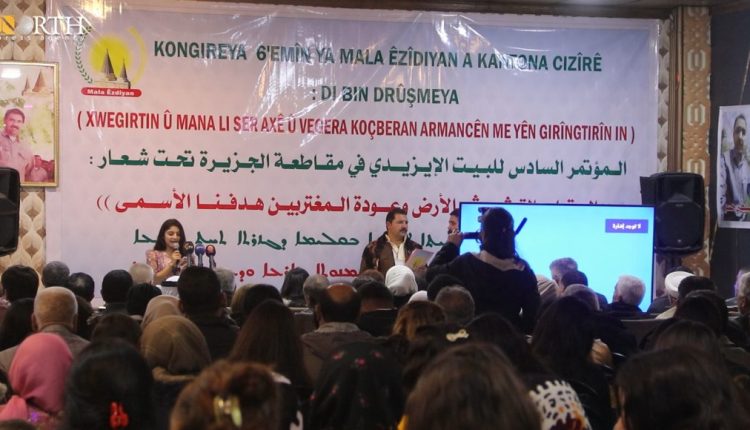
By Dilsoz Youssef
HASAKAH, Syria (North Press) – The latest setbacks that the Yazidis in Syria faced were six years ago when Turkey, along with the Turkish-backed armed opposition factions, aka the Syrian National Army (SNA), took control of the city of Afrin, northwestern Syria, forcing them to leave their homes. Furthermore, Yazidi shrines and graves were destroyed, and others were forced to convert to Islam, according to a report by the Independent International Commission of Inquiry on Syria in 2020.
The ongoing concerns existed before the crisis when the Syrian government refused to recognize them. These concerns persisted during the crisis with the field control by opposition factions, and they were further heightened by the massacre committed by the Islamic State (ISIS) in Sinjar (Shengal) District in northern Iraq, reinforcing their fears of disappearance and loss of identity.
Recently, a series of Turkish airstrikes have emerged as the most prominent threats against the Yazidis in northern and eastern Syria, according to Yazidi researchers.
Under the slogan of “Clinging to the Land” and “The Return of Expatriates is Our Ultimate Goal”, the Yazidi House held its sixth conference on Friday, in Hasakah Governorate, northeast Syria, which concluded with the election of a new presidency and a set of outputs and proposals aimed at stabilizing the Yazidi presence in Syria.
The Yazidis in Syria established the Yazidi House in 2012 to organize their affairs, and after the Sinjar massacre, the institution contributed to the reunification of dozens of abducted Yazidis, both males and females, by ISIS who were liberated by the Syrian Democratic Forces (SDF) when they ended the geographical control of ISIS in Syria.
Suleiman Jafar, a researcher in Yazidi affairs, said that the Yazidis, who are considered one of the oldest religions in history, have always been marginalized and subjected to massacres. Many of them were forced to convert to other religions under threat and coercion.
Before the Syrian crisis, the Yazidis were marginalization by governments without being recognized as a distinct component or their religion being recognized as a separate religion. They were forced to convert to Islam, which pushed many of them to leave the country, according to Jafar.
The researcher told North Press that during the Syrian crisis, terrorist groups found areas where Yazidis were present to be fertile ground for their operations, so they began slaughtering Yazidis, which also led many of them to flee for safety.
In August 2020, the Independent International Commission of Inquiry on Syria published a detailed report that addressed the violations committed by the SNA in Afrin against the Yazidis, their beliefs, and their shrines.
The Autonomous Administration of North and East Syria (AANES) acknowledges in its Social Contract, under Article 41, the Yazidi religion as a separate religion.
Jafar believes that preserving the Yazidi identity begins with ensuring the presence of Yazidis with a supporting force in the country, which is currently the AANES.
However, he emphasized the continuation of risks and threats against them, stating, “Promoting tolerance and recognizing the other is one of the most important things that should be done in Syria to preserve all beliefs and identities.”
In turn, Farouk Tozo, a member of the Administrative Council in the Yazidi House, said that they are in constant communication with other Yazidi organizations and unions in Syria and abroad to gather the scattered Yazidi community and preserve their existence.
After decades of deprivation, Yazidis, as an indigenous people in the region, have received attention from the AANES, according to Tozo.
He added that the Yazidi House is concerned with several issues specific to the community, the most important of which is the issue of migration, because the path to preserving the Yazidi presence in Syria begins with staying in their lands, according to Tozo.
Over the past years, in cooperation with the security forces, the Yazidi House has succeeded in liberating 428 Yazidi captives who were abducted by ISIS in Sinjar in 2014.
Official statistics indicate that ISIS abducted 6,417 Yazidis, the majority of whom were women and children, while around 360,000 fled from Sinjar.
Tozo clarifies that they coordinated with the security forces after ISIS was expelled from the town of Baghuz, eastern Deir ez-Zor Governorate, eastern Syria, to free the male and female captives and return them to their families in Sinjar.
He pointed out that great attention is given to rehabilitate them after ISIS’ attempts to brainwash them.
